(801) 951-8099
a
(801) 951-8099
Plastic Surgery for Ear Deformities
Ear Reconstruction
When a person has a malformed ear, surgical restoration is best achieved using the patient’s own tissues. This includes children who are born without a normal shaped ear or deformities following traumatic ear loss.
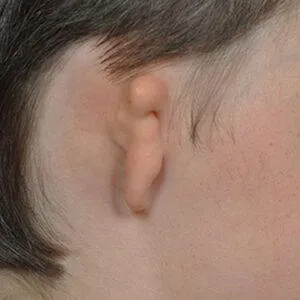
Microtia (small ear, from Greek mikró, small and Greek ōtikos, from ous, ōt-, ear, otia – ear condition)
A child may be born with a tiny malformed ear, as a manifestation of embryologic underdevelopment. Such patients can begin to undergo restorative ear surgery as early as six years of age to create a new external ear. The most effective method for success is the use of the patient’s own rib cartilage from which a new ear framework is carved. This technique recreates the living natural ear which allows for retention of the protective sensation of the new ear. If the child’s new ear is injured or develops an infection, it is treated like a “normal” ear since it is the child’s own tissues. Ear reconstruction is an operation where there is ONE good chance to create a new ear.
The result depends on your surgeon’s artistic ability to sculpt the new ear in with cartilage. The process begins with careful planning of the missing ear using measurements, patterns, molds, and plaster casts which are made from the patient’s current ears. During the first surgery, the patient’s own rib cartilage is carefully carved to make a framework that is implanted beneath the skin. The earlobe may be rotated into the proper position as part of the first stage or at a second stage. At the next stage, the ear is elevated and a skin graft is placed behind the cartilage to create the space behind the ear. The final stage includes refining the central cup of the ear (concha) and the protective door over the ear canal (tragus). A multiple-stage approach is used to provide anatomic results and an ear that has a protective sensation.

Surgery is scary no matter what age you are! A snuggly Teddy Bear gives comfort.
If you’d like to help make their experience more comfortable, donate a bear. The bear will go to a child before their surgery.
About

Our goal is to help give these children, of all ages, the best chance to obtain success in their lives. Through reconstructive plastic surgery, these individuals can walk tall and Keep their Heads Up.
Follow Us on Social Media

Before

After
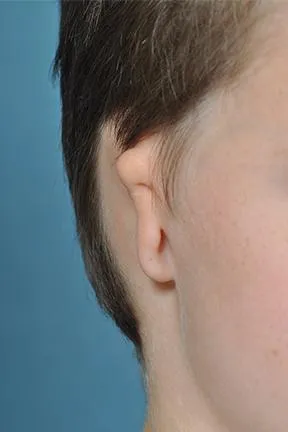
Before
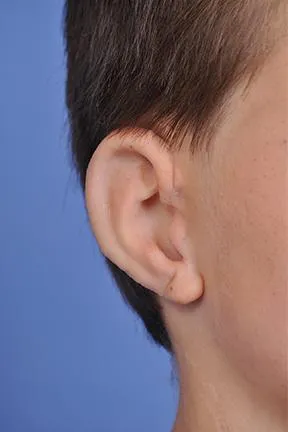
After
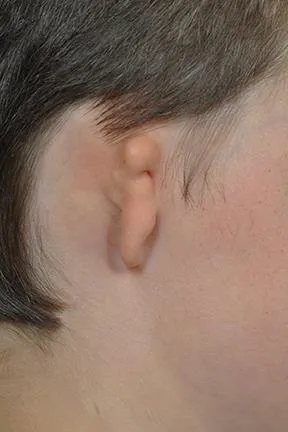
Before
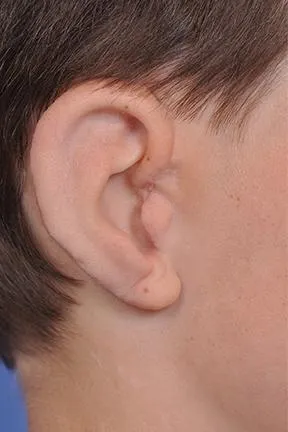
After
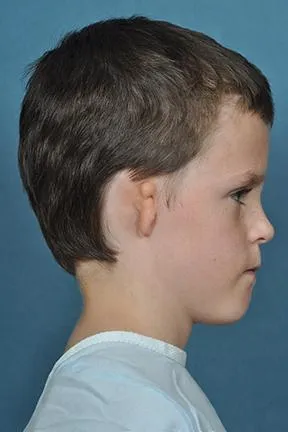
Before
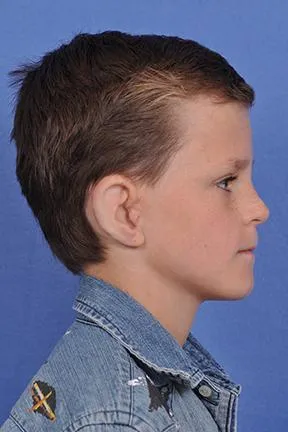
After
*Disclaimer: Individual results vary. Images do not constitute a promise or representation of any particular outcome or experience.
Atresia (Absence of the Ear Canal)
If the patient has sufficient internal hearing structures, it may be desirable to create an external auditory canal. The creation of the external ear must be completed before an ear canal is made. The plastic surgeon consults with the Neurotologist, specialist in otolaryngology (ENT), to help determine if the patient is a candidate for hearing restoration, atresia repair.

Before

After
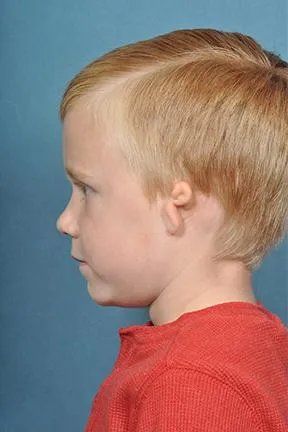
Before
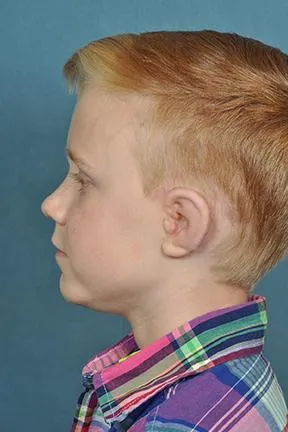
After
*Disclaimer: Individual results vary. Images do not constitute a promise or representation of any particular outcome or experience.

Before

After
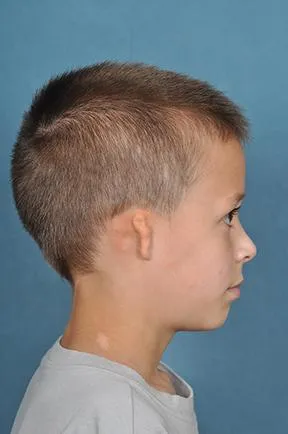
Before
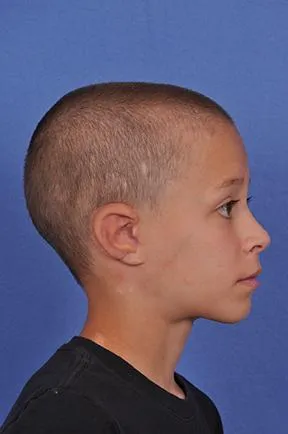
After

Before

After
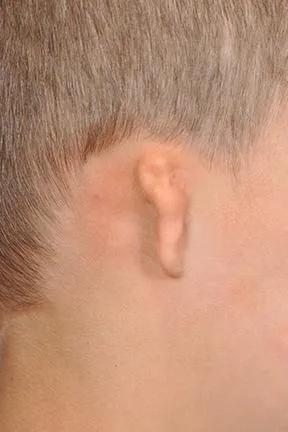
Before
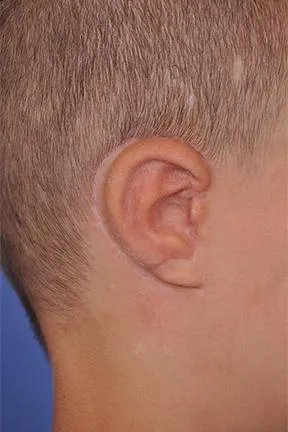
After
*Disclaimer: Individual results vary. Images do not constitute a promise or representation of any particular outcome or experience.
For more information about Ear Reconstruction for Microtia, check out FairbanksMD.com
*All pictures are of real patients of Grant A. Fairbanks, M.D. Identifiable images are used with patient or parent of patient permission.
Plastic Surgery for Ear Deformities
Ear Reconstruction
When a person has a malformed ear, surgical restoration is best achieved using the patient’s own tissues. This includes children who are born without a normal shaped ear or deformities following traumatic ear loss.

Microtia (small ear, from Greek mikró, small and Greek ōtikos, from ous, ōt-, ear, otia – ear condition)
A child may be born with a tiny malformed ear, as a manifestation of embryologic underdevelopment. Such patients can begin to undergo restorative ear surgery as early as six years of age to create a new external ear. The most effective method for success is the use of the patient’s own rib cartilage from which a new ear framework is carved. This technique recreates the living natural ear which allows for retention of the protective sensation of the new ear. If the child’s new ear is injured or develops an infection, it is treated like a “normal” ear since it is the child’s own tissues. Ear reconstruction is an operation where there is ONE good chance to create a new ear.
The result depends on your surgeon’s artistic ability to sculpt the new ear in with cartilage. The process begins with careful planning of the missing ear using measurements, patterns, molds, and plaster casts which are made from the patient’s current ears. During the first surgery, the patient’s own rib cartilage is carefully carved to make a framework that is implanted beneath the skin. The earlobe may be rotated into the proper position as part of the first stage or at a second stage. At the next stage, the ear is elevated and a skin graft is placed behind the cartilage to create the space behind the ear. The final stage includes refining the central cup of the ear (concha) and the protective door over the ear canal (tragus). A multiple-stage approach is used to provide anatomic results and an ear that has a protective sensation.

Before

After

Before

After

Before

After

Before

After
*Disclaimer: Individual results vary. Images do not constitute a promise or representation of any particular outcome or experience.
Atresia (Absence of the Ear Canal)
If the patient has sufficient internal hearing structures, it may be desirable to create an external auditory canal. The creation of the external ear must be completed before an ear canal is made. The plastic surgeon consults with the Neurotologist, specialist in otolaryngology (ENT), to help determine if the patient is a candidate for hearing restoration, atresia repair.

Before

After

Before

After
*Disclaimer: Individual results vary. Images do not constitute a promise or representation of any particular outcome or experience.

Before

After

Before

After

Before

After

Before

After
*Disclaimer: Individual results vary. Images do not constitute a promise or representation of any particular outcome or experience.
For more information about Ear Reconstruction for Microtia, check out FairbanksMD.com
*All pictures are of real patients of Grant A. Fairbanks, M.D. Identifiable images are used with patient or parent of patient permission.

Surgery is scary no matter what age you are! A snuggly Teddy Bear gives comfort.
If you’d like to help make their experience more comfortable, donate a bear. The bear will go to a child before their surgery.
About

Our goal is to help give these children, of all ages, the best chance to obtain success in their lives. Through reconstructive plastic surgery, these individuals can walk tall and Keep their Heads Up.
